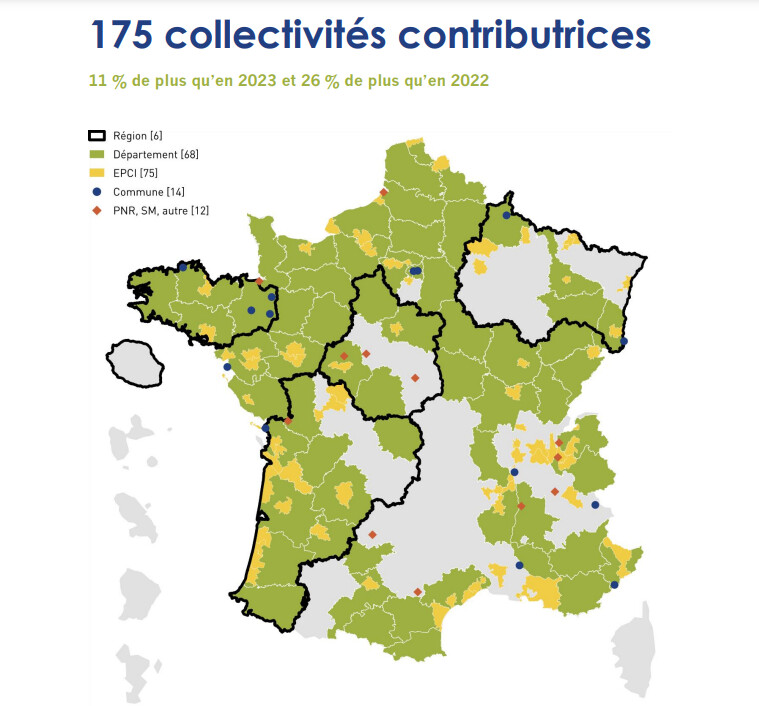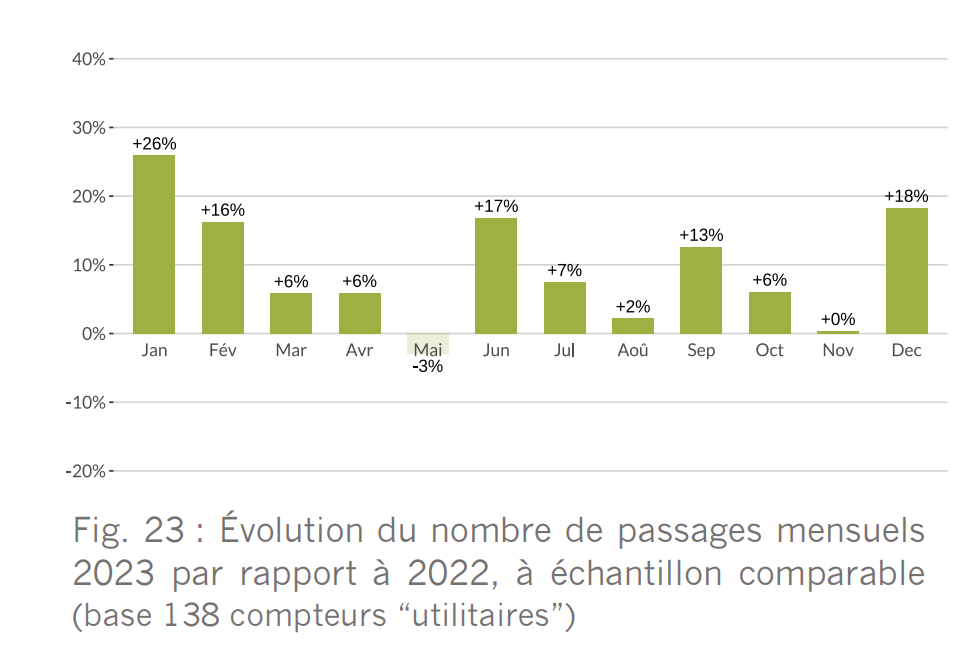Vélo & Territoires has published its report on cycle use in 2023. If cycle use increased in France between 2022 and 2023, another notable fact emerges from the document: in winter, cycle paths are clearly not abandoned by cyclists .
Each year, Vélo & Territoires publishes a new report on cycling traffic from the previous year. The opportunity to gain height and take an overall assessment of cycling. But let’s first try to recall the organization’s methodology, which details its approach and calculation processes in detail.
The 2023 report is thus based on 1,225 meters, or 70% of the shared meters that we count in France – this is 2 points more than in 2022. In total, our territory claims 1,731 meters. If the data therefore tends to become more reliable, there is still some work to be done to optimize the representativeness of the practice.
Ever more reliable data
In 2023, 19 new communities contributed to the national V&T report. Unfortunately, certain areas are still not taken into account, such as the west of Auvergne Rhône-Alpes (Allier, Puy du Dôme, Cantal) and the north of Occitane (Aveyron, Lozère). This map demonstrates this.

More generally, what should we remember about attendance on a national scale?
Below, the evolution of bicycle use compared to 2022 and 2019, the pre-Covid year considered as the last “reference” year.
- In France: + 5% compared to 2022, + 37% compared to 2019;
- In large cities: + 6% compared to 2022, + 40% compared to 2019;
- Peri-urban areas: + 0% compared to 2022, + 22% compared to 2019;
- Rural areas: + 0% compared to 2022, + 26% compared to 2019;
To understand these figures, it is necessary to look at the typologies of cycling. Vélo & Territoires has defined three according to the location of the meters dispatched in the territory: utility (vélotaf, transporting children to school); leisure (VTC, gravel, cycle touring) and mixed (where utility and leisure meet).
Utility practice boosts national attendance
Growth 2023 “is mainly driven by utilitarian and mixed practices in urban areas, with an increase of 7% and 3% respectively for these two practices“. The practice of leisure stagnates from one year to another. Compared to 2023, the trio has increased significantly: +38%, +44% and +22%, respectively.

That’s it for the overall numbers. The V&T report also focuses on an interesting fact: cycling in winter, and more generally during cold periods. Unsurprisingly, cycling increases in spring and summer: “The period from May to October concentrates 60% of the passages recorded in 2023“, we can read. While this period represents 50% of the months of the year.
In winter, the bike resists
However, cycling is not abandoned during the fall and winter, quite the contrary. This encouraging phenomenon affects more specifically utilitarian practice, which has “recorded a monthly increase throughout the year, with the exception of May and November”, says the report.
And to continue: “In May, consecutive public holidays and sporadic showers led to a slight decline of 3%. In November, the practice remained stable, demonstrating resilience in the face of early winter weather conditions“. Proof that the cold does not dampen the enthusiasm of cyclists.

Let us specify that utilitarian practice generally refers to urban use of the bicycle. V&T adds: “Utility use is essentially organized around two peaks linked to rush hours: from 7 a.m. to 9 a.m. in the morning and from 5 p.m. to 7 p.m. in the afternoon. These slots represent 53% of passages recorded during the week“.
Summer remains the best time for cycling
Utility cycling also saw sharp increases in December, January and February, of 18, 26 and 16% compared to last year. In short: from one year to another, cycling traffic has increased in these months generally considered to be the coolest of the year.
At national scale, “summer represents the largest share of annual bicycle crossings (31%)» compared to 18% in winter, all practices combined. Obviously, the summer period is more conducive to cycling, but the winter period is not avoided by cyclists.
